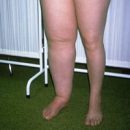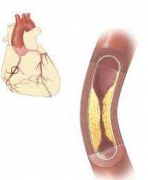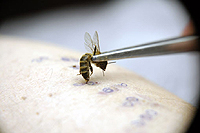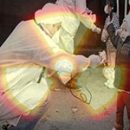The aneurysms of the peripheral arteries in most cases amazing the popliteal artery, less often the femoral and sleepy. Special view of the aneurysms of the arteries of the kidneys, intestines or brain. Operational intervention is the main treatment of the aneurysm of peripheral arteries.
Content
The concept of aneurysm peripheral artery
 When the weak section of the blood vessel expands in the form of a cylinder, this phenomenon is called aneurysm. Most often aneurysm is striking the aorta - the main artery of our body. Aorta carries blood from the heart to all other organs and tissues. Part of the aorta, located in the chest, is called the thoracic. Part of the aorta located in the abdominal cavity is called the abdominal department.
When the weak section of the blood vessel expands in the form of a cylinder, this phenomenon is called aneurysm. Most often aneurysm is striking the aorta - the main artery of our body. Aorta carries blood from the heart to all other organs and tissues. Part of the aorta, located in the chest, is called the thoracic. Part of the aorta located in the abdominal cavity is called the abdominal department.
Peripheral arteries are affected by aneurysm less often than Aorta. The most often peripheral aneurysm is striking the fallated artery, which descends on the rear surface of the knee. Less often aneurysta is striking the femoral artery in the field of groin fold, a carotid artery on the neck and sometimes arteries on the upper limb. A special type of peripheral aneurysms that affect the arteries of the kidney or intestines are called visceral aneurysms.
Aortic aneurysms can cause severe complications in the form of a break or bundle. Although the aneurysms of peripheral arteries are rare. However, in the aneurysms of peripheral arteries, the formation of thrombas, which can cause blockage of brain vessels or limbs.
The aneurysms of peripheral arteries, especially at large sizes, can squeeze the nerves passing nearby or veins, as well as cause pain, numbness or swelling.
Basic symptoms of the disease
At the very beginning of the disease, the patient may not feel any signs of the presence of aneurysm, especially if it is small. Two of three patients with aneurysm of peripheral arteries do not note any signs of the disease.
Symptoms of peripheral aneurysm depend on the size and localization of it. Possible signs of peripheral artery aneurysms:
- Sensation of pulsating education
- Pains or cramps in hand or legs during exercise
- Pain in hand or legs alone
- Painful ulcers or wounds in the field of fingers or legs
- irradiating pain or numbness in hands or legs associated with the squeezing of nerves
- Gangrene (samples) of fabrics as a result of blockage of the lumen of arteries
When involving the carotid arteries in the process, signs of transient ischemic attacks or stroke may occur. This is written in detail in the section on the diseases of the sleepy arteries. When involving the intestinal arteries, symptoms of mesenteric ischemia arise.
Causes of disease development
The cause of the aneurysm of peripheral arteries may be infection or damage to the walls of the arteries of any other reason. However, the main reason for the development of aneurysm remains no longer clear. Researchers consider the main cause of development aneurysm atherosclerosis. Normally, the wall of the arteries has a smooth and smooth surface. It has a certain elasticity. In atherosclerosis on the walls of the arteries, special growths appear - atherosclerotic plaques, which consist of cholesterol, calcium and fibrous fabric. Over time, the arteries become less elastic. Under the action of high blood pressure (for example, in aorta 120 mm RT.Art.) The wall of the arteries expands - aneurysm occurs.
Factors contributing to this process:
- smoking
- high blood pressure
- High blood cholesterol
- obesity
- Healthy factor
With age, the risk of developing the aneurysm of peripheral arteries increases.
Diagnostic Methods Aneurysm Peripheral Arteries
Initially, the doctor recognizes the complaint from the patient, their character, when they appeared and with which are connected. Next is held glad tools. Let us list these methods of research:
- Duplex ultrasound examination
- Magnetic resonance imaging
- CT scan
- angiography - the most invasive method
It is known that many patients with aneurysms suffer in addition to heart disease. Therefore, before surgical treatment, aneurysm should be examined by a cardiovascular system. This includes the performance of an electrocardiogram, ultrasound examination of the heart and others.
The main directions of treatment of the disease
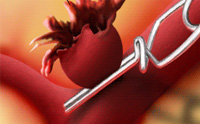 The treatment of aneurysm depends on its localization, sizes, symptoms and the presence of complications of the aneurysm in the form of thrombosis. For example, the aneurysm of the popliteal artery is not the indication for the operation. In this case, the doctor can recommend you as follows:
The treatment of aneurysm depends on its localization, sizes, symptoms and the presence of complications of the aneurysm in the form of thrombosis. For example, the aneurysm of the popliteal artery is not the indication for the operation. In this case, the doctor can recommend you as follows:
- Control Factors Risk of atherosclerosis
- Regular walks in order to maintain adequate blood flow to the leg
- Do not cross the legs
- monitor the hygiene feet and for the appearance of ulcers on the fingers - a sign that is a signal of circulatory disorders
Although the aneurysm of the popliteal artery is rarely bursting, sometimes it can thrombide, resulting in a blood flow in the leg. Such aneurysm can also serve as a source of thromboms and particles of atheromatous plaques, which also leads to circulatory disorders at the bottom of the leg. Ultimately, these phenomena lead to a planning result - the need for amputation of a part of the lower limb (finger, foot and above). Therefore, most often with the aneurysms of the femoral or popliteal artery, only surgical treatment is the best option. The aneurysms of carotid arteries and the arteries of the upper extremities are somewhat different clinic. But the treatment of them is the same as all aneurysms.
Usually, in the treatment, the aneurysm of peripheral arteries Vascular surgeons are used either by shunting, or prosthetics.
Shunting is that the surgeon creates from «Donorsky» vessel (more often of the subcutaneous vein hips) bypass path for blood flow. Aneurysta is removed. This operation is usually carried out under local anesthesia, sometimes under total (it all depends on the severity and localization of the aneurysm).
Under prosthetics, the surgeon removes the area of the artery affected by aneurysm, and the synthetic prosthesis in the form of a tube. The material from which the vessel prosthesis is being made in its properties and characteristics is approaching the properties of the arterial wall.
When thrombing the lumen of the annevism of the artery, the thrombolytic therapy method is used, which consists in the fact that in almost a thrombus with the help of a special catheter during angiography injected a thrombolytic - a substance dissolving the thrombus. However, this method is effective only with fresh blood clusters.
There is another newest endovascular surgery method - stenting. The method is that with the help of a catheter, which is used in angiography, in the artery, to the aneurysm site, the stent is supplied - the special design of the cylindrical shape, which serves as a frame for the changed wall of the aneurysmatic extended artery. This method is used in the case when the risk of ordinary surgical intervention is high.
In some cases, especially with inadequate treatment, the patient may develop gangrena - tissue sacrifice. At the same time, changes in the tissues are irreversible. The only way to preserve the health of the patient in this case is amputation.
Development prevention Aneurism is to eliminate the risk factors for their occurrence. About them already mentioned above.

